Let's go find for highlights of Japan!日本の魅力を探しに行こう!
2023.09.29
皇居や浅草など東京の人気観光スポットを巡るバスツアーが研修員向けに開催されました!
世界から見たTokyoの姿とは・・・・
まず訪れたのは新宿エリア。
海外からは「ゴジラの街」として知られ、その知名度の高さに驚きました。そして、秋葉原へ向かう途中、アニメの看板や秋葉原のポップカルチャーを目にして“Kawaii Kawaii“と研修員たち。日本の“Kawaii“文化は、国境を越えて人の心を掴むようですね。

はい、cheeeeeeeese!!
最初の降車地点は皇居。
歴史を感じさせる門に、研修員たちは興味津々でした。江戸幕府の中枢として政治を担ってきた江戸城がその後、天皇が住むことになる皇居になったという歴史を真剣に聞く研修員たち。感想を聞いてみると「歴史的な背景を知ることで、より目の前の景色に趣を感じることができる」「伝統的な建物である皇居とその前にある近代的なビル群との対比が美しい」と話してくれました。
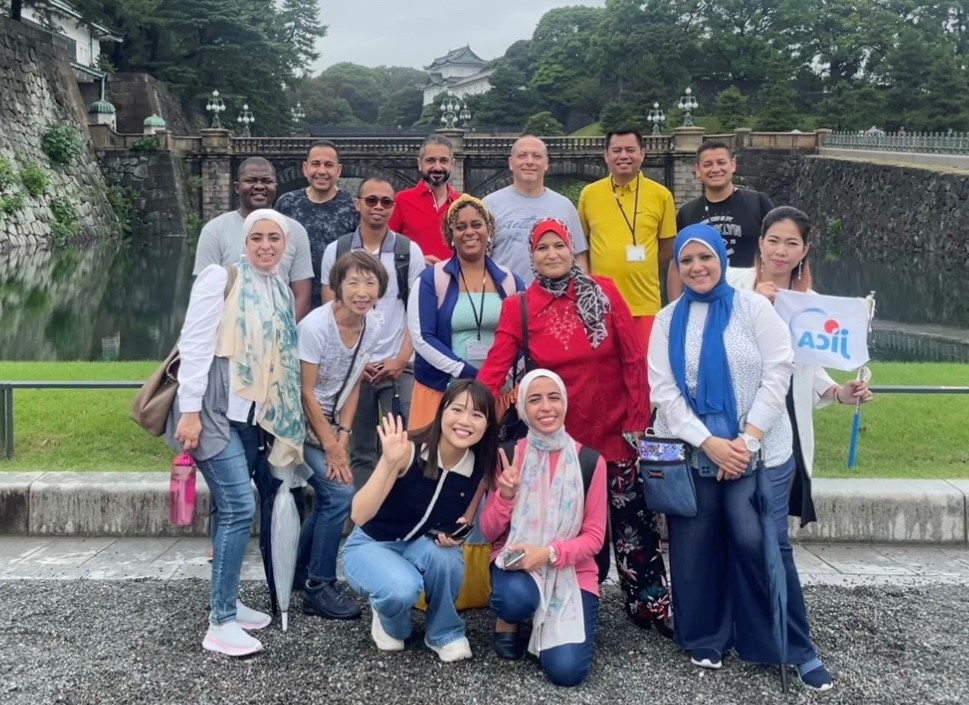
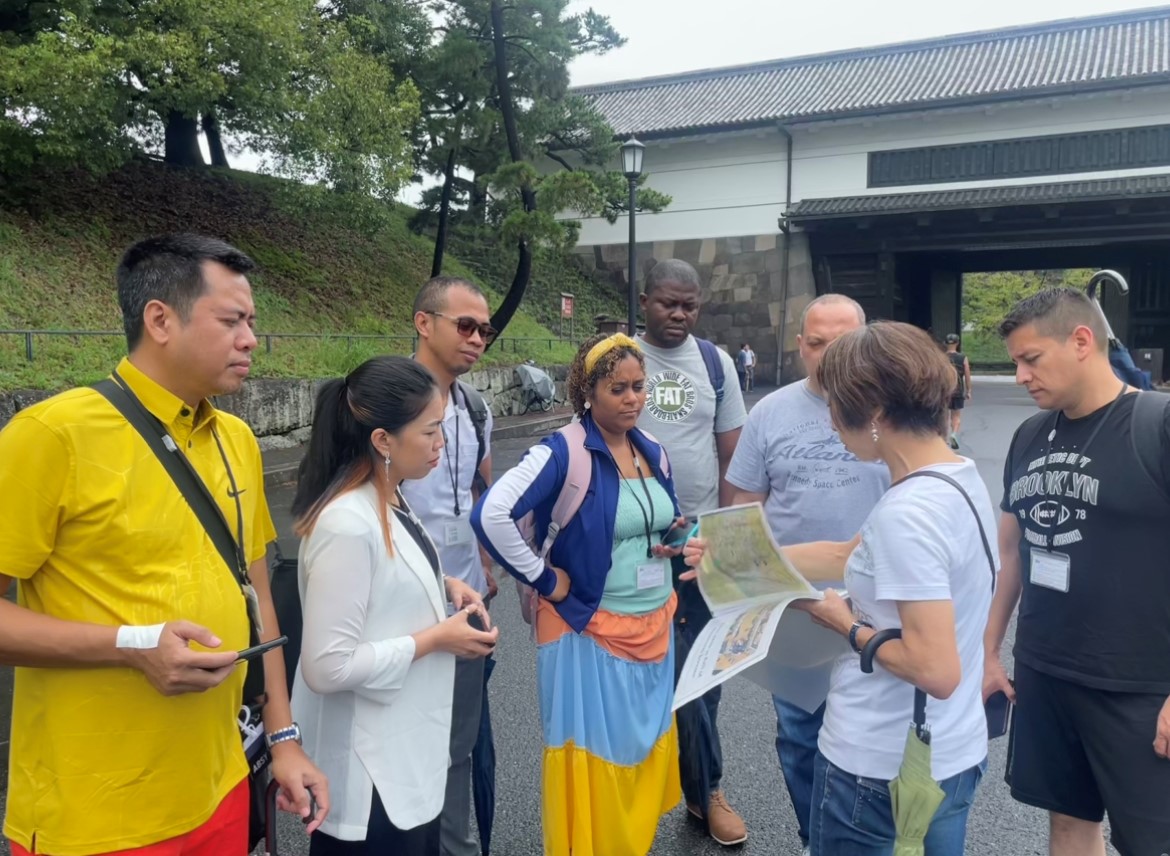
ボランティアガイドさんの話を真剣に聞く研修員たち
続いて向かったのは、下町情緒溢れる浅草。
研修員たちはバスを降りるなり、個々に気になる場所へ。あとを追いかけるのが大変でしたが、予定通りに進まないこともツアーの楽しみの一つですね!「着物の人と写真を撮りたい」という研修員のために声をかけると、なんと中国から観光に来た方!これには研修員も「日本人は着物を着ないのか?」と驚きの表情でした。家族のためにお土産を買う研修員、わらびもちアイスを頬張る研修員、浅草寺の常香炉をかけすぎて咳き込む研修員、浅草には目もくれずコンビニの「坦々麺」を買いに行った研修員(坦々麺に負けない熱さで美味しさを語ってくれました)、普段の研修では見られない皆さんの姿に私自身もほっこりしました。
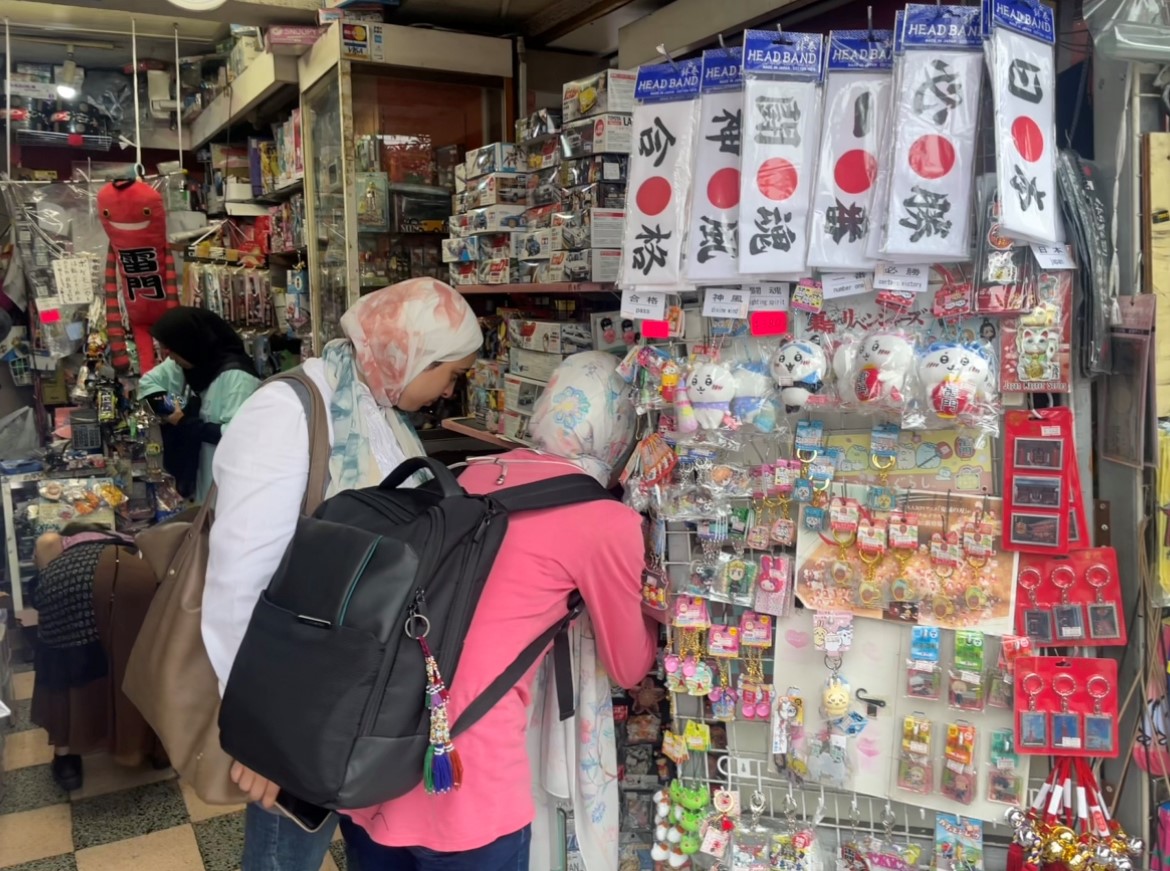
お土産選びに悩んでいる様子
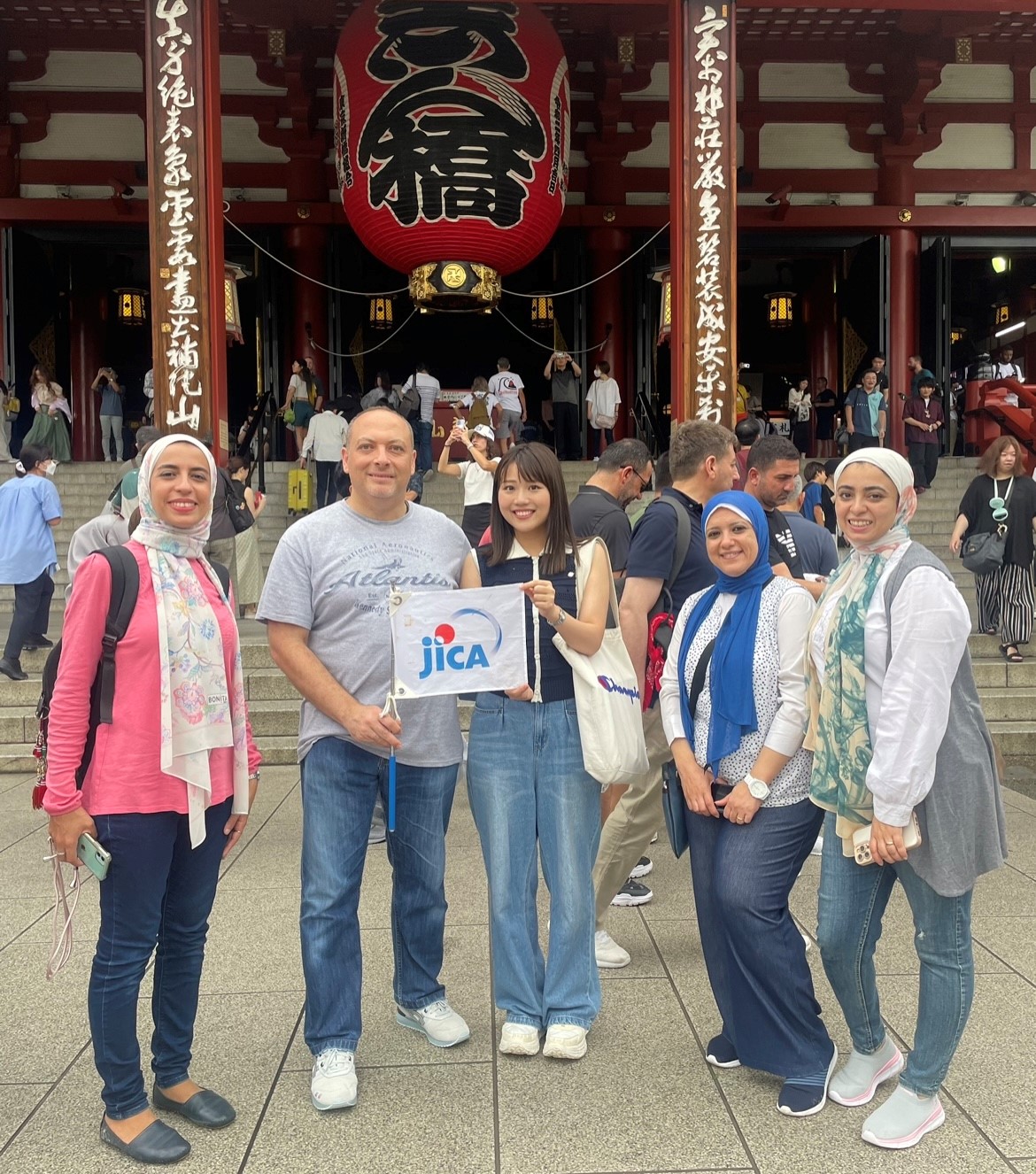
エジプトから来た研修員たち
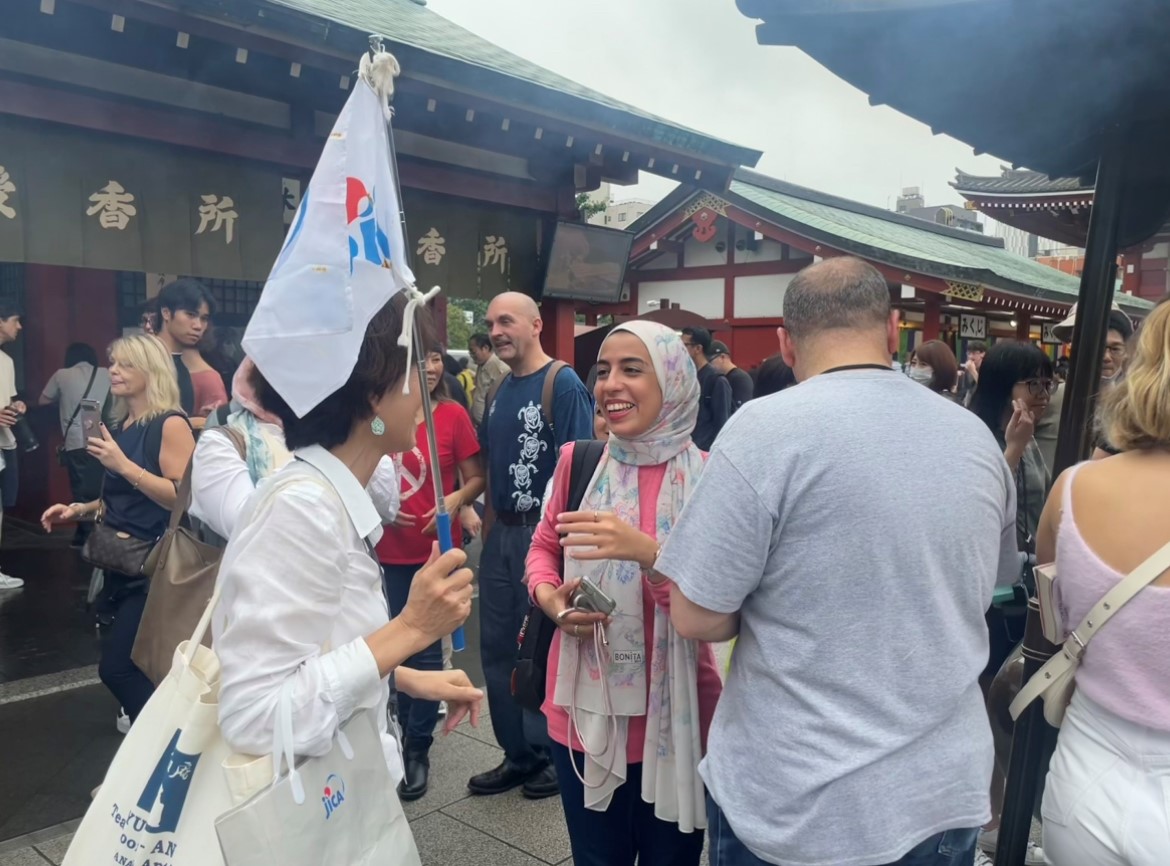
浅草寺の常香炉の煙をポケットに入れて「お金持ちになりたい」と話す研修員もいました(笑)
ツアーも終盤、訪れたのはレインボーブリッジ。
「なぜレインボーじゃないのにこの名前なの?」と聞かれて調べてみると、「レインボーブリッジ」という名前は一般公募の中から選ばれた愛称で、芝浦とお台場を繋ぐ「虹の架け橋」という意味が由来だそうです。日本人にとっては当たり前で疑問を持たないようなことも「Why?」と聞かれ、見つめ直すことで、日本の魅力を再発見できました。
帰り道は、ツアーで学んだことに関するクイズで大いに盛り上がりました!研修員たちが「午前中では足りない!まだ帰りたくない!」と言ってくれた瞬間は、グッとくるものがありました。今はネットで自分の欲しい情報がすぐに見られる時代ですが、自身の目で見て、耳で聞いて、肌で感じた思い出は、一生心の中に保存されると思います。このバスツアーが日本を好きになるきっかけの1つになってくれたら嬉しいです!
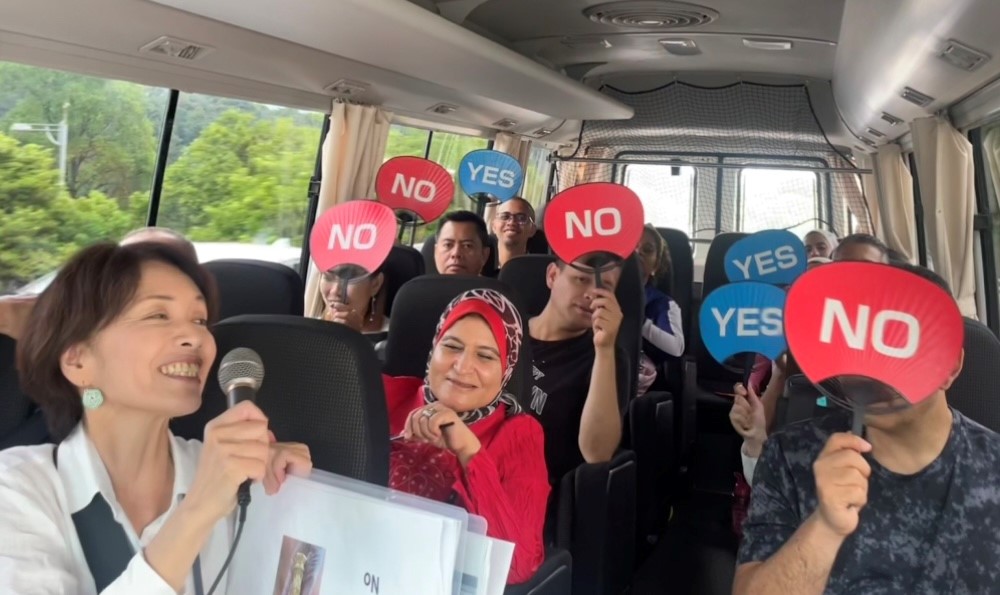
YES NOクイズで今日のツアーの振り返りをしました!
JICA東京 総務課インターン 沼本若菜
◆◆◆◆◆◆◆◆◆◆◆◆◆◆◆◆◆◆◆◆◆◆
A bus tour of the Imperial Palace, Asakusa, and other popular sightseeing spots in Tokyo was held for participants! What Tokyo looks like from a global perspective: ・・・・
The first area we visited was Shinjuku area. Known overseas as "Godzilla's city," I was surprised at how well known it is. On the way to Akihabara, the participants saw anime billboards and Akihabara's pop culture and called it "Kawaii Kawaii. It seems that Japan's "Kawaii" culture transcends borders and captures people's hearts.
The first stop was the Imperial Palace. The participants were very interested in the historical gate. The participants listened intently to the history of how Edo Castle, which served as the political center of the Edo Shogunate, later became the Imperial Palace where the emperor resided. When asked for their impressions, they said, "Knowing the historical background made the scenery in front of us more interesting," and "The contrast between the traditional buildings of the Imperial Palace and the modern buildings in front of it is beautiful.
The next stop was Asakusa, a town full of traditional downtown atmosphere. As soon as the participants got off the bus, they went to their favorite places individually. It was hard to keep up with them, but one of the joys of touring is that things don't always go as planned! One of the participants wanted to take a picture with a person wearing a kimono so I asked her, and to our surprise, she was a tourist from China! The participants were surprised to hear that and said "Don't Japanese people wear kimonos?”.
One participant bought souvenirs for his family, another was chewing on a bowl of warabimochi ice cream, another was coughing because he had taken too much smoke from the incense burner at Sensoji Temple, and another run to buy "dandanmen" at a convenience store without looking at Asakusa (he told us how delicious the noodles were as hot as the dandanmen). I got a warm feeling by their behavier, which is something I don't usually see in training sessions.
Toward the end of the tour, we visited the Rainbow Bridge. They asked why it was named Rainbow Bridge if it is not Rainbow, so I looked it up. I found out that the name "Rainbow Bridge" was chosen as a nickname from public submission, and that it derives from the meaning of a "rainbow bridge" connecting Shibaura and Odaiba. By being asked "Why?" about things that Japanese people take for granted and do not question, I was able to rediscover the charms of Japan.
On the way home, we had a lot of fun with a quiz on what we had learned on the tour! It was a very touching moment for me to hear them say, "It's not enough only in the morning, I don't want to go home yet!” Nowadays, we can easily find the information we want on the internet, but the memories of what we saw with our own eyes, heard with our own ears, and felt with our own skin will be preserved in our hearts for the rest of our lives. I hope this bus tour will be one of the reasons for them to fall in love with Japan!
(Wakana Numamoto, Intern, Administration Division, JICA Tokyo)
scroll